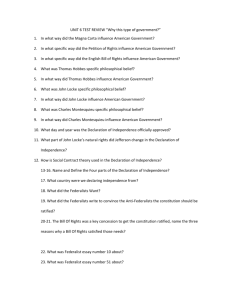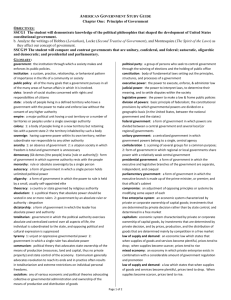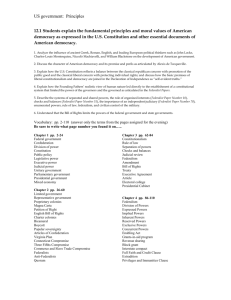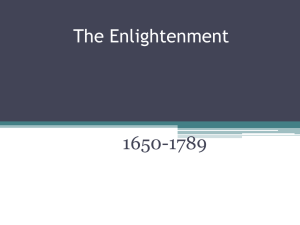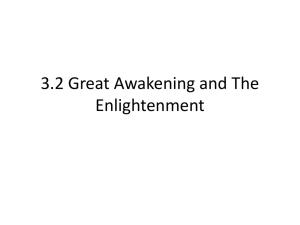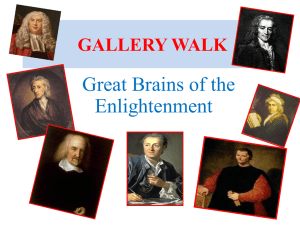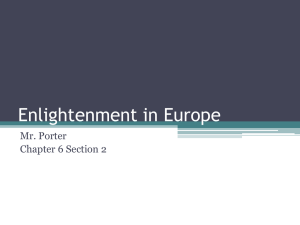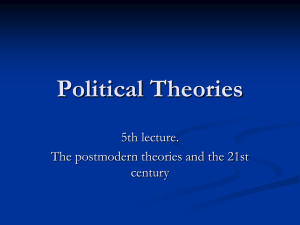Unit 1 Chapter 1 (pg. 6-12, 14-17, and 19-23) and 27 (pg. 588
advertisement
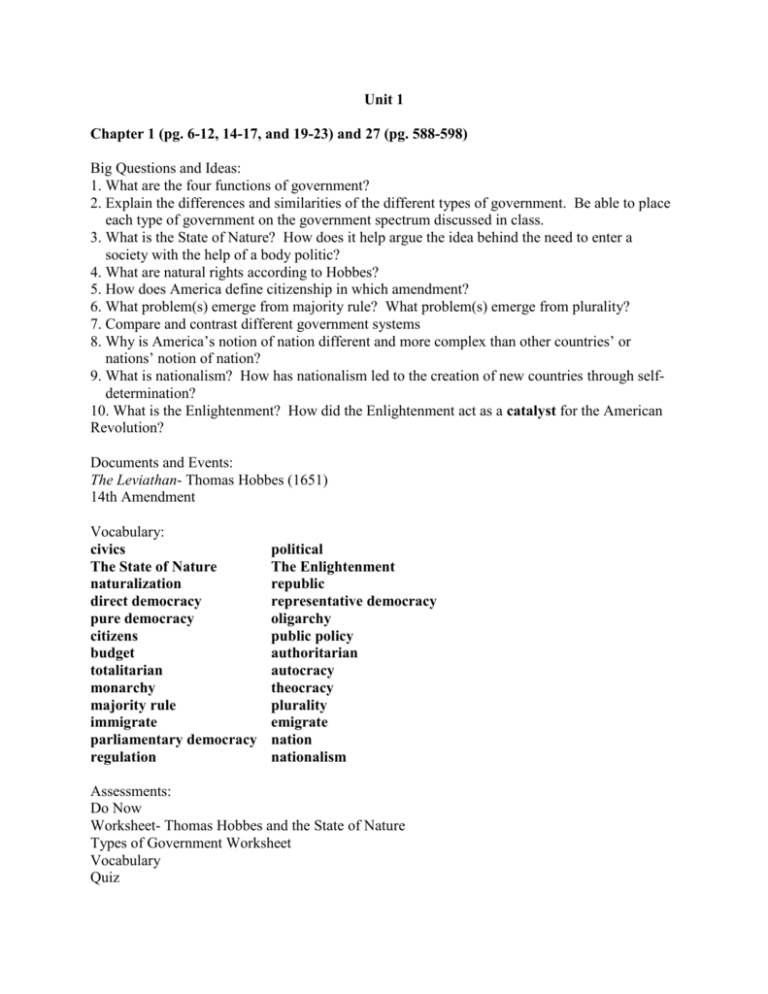
Unit 1 Chapter 1 (pg. 6-12, 14-17, and 19-23) and 27 (pg. 588-598) Big Questions and Ideas: 1. What are the four functions of government? 2. Explain the differences and similarities of the different types of government. Be able to place each type of government on the government spectrum discussed in class. 3. What is the State of Nature? How does it help argue the idea behind the need to enter a society with the help of a body politic? 4. What are natural rights according to Hobbes? 5. How does America define citizenship in which amendment? 6. What problem(s) emerge from majority rule? What problem(s) emerge from plurality? 7. Compare and contrast different government systems 8. Why is America’s notion of nation different and more complex than other countries’ or nations’ notion of nation? 9. What is nationalism? How has nationalism led to the creation of new countries through selfdetermination? 10. What is the Enlightenment? How did the Enlightenment act as a catalyst for the American Revolution? Documents and Events: The Leviathan- Thomas Hobbes (1651) 14th Amendment Vocabulary: civics The State of Nature naturalization direct democracy pure democracy citizens budget totalitarian monarchy majority rule immigrate parliamentary democracy regulation political The Enlightenment republic representative democracy oligarchy public policy authoritarian autocracy theocracy plurality emigrate nation nationalism Assessments: Do Now Worksheet- Thomas Hobbes and the State of Nature Types of Government Worksheet Vocabulary Quiz Chapter 2 (pg. 28-32, 33-38, 39-42) Big Questions and Ideas: 11. From which political system did the American system stem? Why? 12. What was required for the Magna Carta to establish the first official rights? How did it create a precedent for political rights? 13. What were the precedents of the Glorious Revolution? 14. Compare and contrast the common law court system to the statutory law system. 15. How is the establishment of Jamestown and Plymouth important to understanding the colonial belief in self-government? 16. Why did mercantilism and the French and Indian War lead to colonial rebellion? 17. Why did the French and Indian War lead to the taxes on the colonists by Great Britain? 18. Why does John Locke’s social contract principle contribute to American Revolutionary thought? Use the Declaration of Independence as evidence. 19. How did Thomas Paine interpret the events at Concord and Lexington? What led to those events? 20. Explain the difference between how we perceive states today compared to states at the beginning of (and right after) the American Revolution? 21. What were four main problems with the Articles of Confederation? Documents and Events: - The Magna Carta (1215) pg. 659 - Jamestown (1607) - Mayflower Compact and Plymouth (1620) - Glorious Revolution (1688) - English Bill of Rights (1689) - Second Treatise of Government- John Locke (1690) - French and Indian War (1754-1763) - Common Sense- Thomas Paine (1776) - The Declaration of Independence- Thomas Jefferson and committee (1776) - Articles of Confederation (1777 and ratified in 1781) Vocabulary: Habeas Corpus Common Law System colony mercantilism Stamp Act Coercive (Intolerable) Acts delegates Lexington and Concord bicameral and unicameral confederation precedent legislature Statutory Law charter House of Burgesses Tea Act First and Second Continental Congress Social Contract constitution state sovereignty Assessments: Do Now Worksheet- The Issue of Representation: Actual and Virtual Vocabulary Quiz Chapter 3 (pg. 52-54, 55-59, 82-87, 89-93) Big Questions and Ideas: 1. Compare and contrast the Virginia Plan, New Jersey Plan, and the Great Compromise. 2. Explain James Madison’s idea of the tyrannical majority and how a republic can help counteract it. 3. Why did smaller states like Rhode Island fear a strong central government? 4. How did the Three-Fifths Compromise benefit both the southern and northern states? 5. How does the U.S. Constitution act as our nation’s sovereign? 6. What issues divided Federalists and Anti-Federalists? 7. How is the U.S. Constitution flexible, and why is its malleability important to American contemporary society? 8. How does the Necessary and Proper clause expand the power of the federal government? 9. Why are separation of powers necessary for checks and balances? Documents and Events: - Montesquieu (1689-1755) - Constitutional Convention (1787) - Three-Fifths Compromise - Electoral College - The Federalist Papers- James Madison, John Jay, and Alexander Hamilton (Publius) - The Federalist # 10- James Madison (1787) - June 21st, 1788 - The United States Bill of Rights (1791) - McCulloch v. Maryland (1819) Vocabulary: checks and balances ratification Federalists separation of powers reserved powers implied powers strict interpretation Supremacy Clause central (federal) government federalism Anti-Federalists expressed (enumerated) powers concurrent powers Necessary and Proper (elastic) Clause loose interpretation popular sovereignty Assessments: Do Now Worksheet- Federalist # 10 Vocabulary Quiz Unit Questions to prepare and consider for the Unit Test: 1. How did the Enlightenment lead to the revolution and guide the principles behind the U.S. Constitution? Refer to Thomas Hobbes’ state of nature, John Locke’s social contract, and Montesquieu’s separation of powers within your essay. 2. Be able to place all events and documents discussed in chronological order to express your understanding of precedent. Assessment: Unit 1 Test

